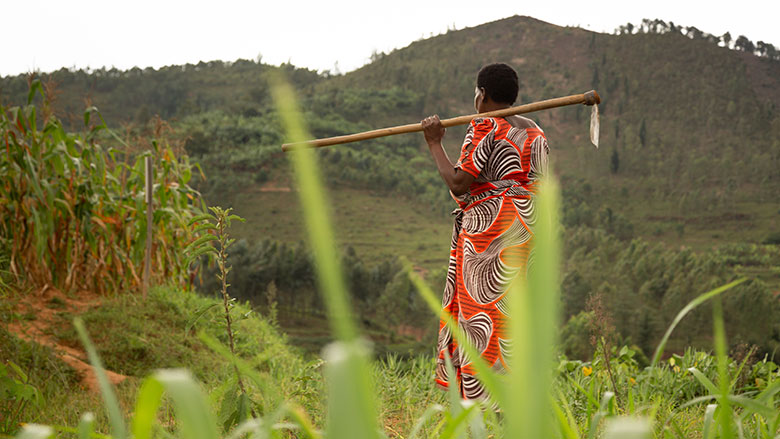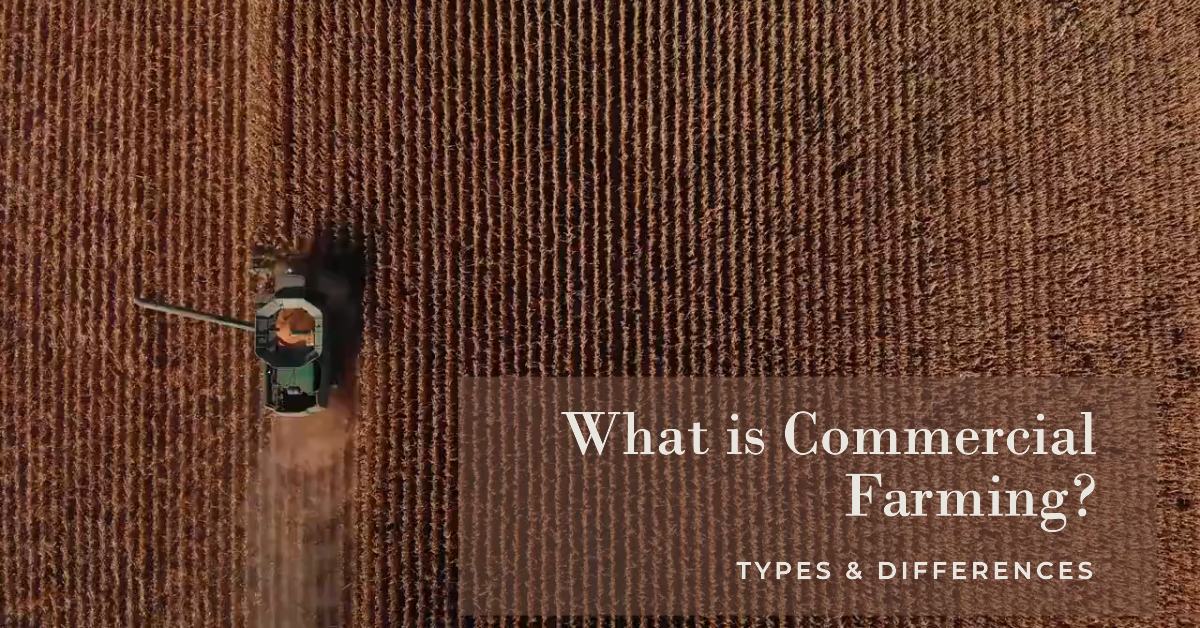Advantages and Obstacles of Commercial Farming vs Subsistence Farming Discussed
Advantages and Obstacles of Commercial Farming vs Subsistence Farming Discussed
Blog Article
Taking A Look At the Technological Innovations Changing Accuracy Farming Today
As the farming industry grapples with the challenges of feeding a growing populace and ensuring sustainability, technical developments are reshaping the landscape of precision farming. The complete influence of these innovations on typical farming methods and their lasting sustainability remains a topic ripe for expedition.
Drones in Farming

Drones facilitate precise tracking of big agricultural areas, identifying locations calling for focus, such as pest infestations or nutrition shortages. This targeted approach enables the enhanced application of fertilizers, pesticides, and water, minimizing waste and ecological effect. Drones dramatically decrease the time and labor typically needed for area evaluations, enhancing efficiency and minimizing operational costs.
Beyond information collection, drones are crucial in accuracy growing and crop spraying, ensuring consistent circulation and decreasing ground disruption. The combination of drones into agriculture exemplifies a change towards data-driven farming methods, where innovation not only increases standard techniques but likewise introduces cutting-edge services for future difficulties. As the agricultural field deals with pressures from environment modification and population development, drones present an encouraging opportunity for sustainable accumulation and source conservation.
Satellite Images Advancements
While drones have actually considerably boosted accuracy farming with aerial information collection, satellite imagery continues to play an important duty in expanding the scope and range of farming tracking. Satellite technology uses vast protection, making it possible for farmers to gain access to important understandings over substantial locations, which is not possible with drone modern technology alone. This is particularly valuable for massive ranches that require detailed, regular data.
Breakthroughs in satellite images have brought around significant enhancements in resolution and regularity of information capture. Modern satellites can currently provide images with resolutions as great as 30 centimeters per pixel, permitting in-depth analysis of crop health, soil problems, and watering patterns. In addition, the regularity of satellite passes has actually increased, making sure that farmers can obtain updated info routinely. This timely data is essential for making informed, real-time choices to enhance crop returns and source use.
Moreover, the combination of multispectral and hyperspectral imagery has actually enhanced the data top quality, enabling the specific identification of plant species, growth stages, and stress factors. With machine learning algorithms, farmers can analyze satellite information better, forecasting plant performance and prospective problems with extraordinary accuracy. These developments are pivotal in improving lasting farming practices internationally.
IoT in Farming
The introduction of the Internet of Points (IoT) in farming stands for a standard change in farming management methods, providing unparalleled connection and data-driven insights. As IoT devices multiply throughout farmland, they offer real-time surveillance and control over various farming processes. These smart tools, that include dirt sensing units, weather stations, and livestock tracking systems, collect and pop over to this web-site transfer information to central systems, this contact form making it possible for farmers to make enlightened decisions and optimize resource use.
IoT modern technology facilitates accuracy farming by improving the precision of information collected from the field. For instance, dirt wetness sensing units can discover variants in wetness degrees, permitting exact watering organizing, which conserves water and promotes healthier plant development. Environment sensing units give critical details on temperature level and moisture, assisting in insect and illness management via prompt interventions.
Additionally, IoT-enabled machinery, such as autonomous tractors and drones, even more streamline procedures by automating labor-intensive tasks and minimizing human error. These technologies not only enhance effectiveness yet additionally add to sustainability by minimizing inputs like water, fertilizers, and pesticides. As IoT continues to develop, its combination right into farming techniques will likely grow, driving performance and sustainability in the agricultural sector.
AI-Driven Analytics
Building upon the robust information collection abilities of IoT, man-made intelligence (AI) arises as go to this site a powerful device in changing raw data right into workable insights for precision farming. AI-driven analytics leverages machine learning formulas to assess substantial datasets gathered from sensing units, drones, and satellites.

Additionally, AI-driven analytics support accuracy farming by using customized recommendations for planting routines and watering monitoring. These understandings help optimize water usage, lining up with sustainability objectives. By supplying real-time insights and calculated advice, AI-driven analytics not just boost functional performance but also contribute towards sustainable agricultural practices, securing food supply chains for the future.
Robotics and Automation
In the realm of precision farming, robotics and automation are reinventing farming methods by supplying extraordinary performance and precision - commercial farming vs subsistence farming. These modern technologies are increasingly being integrated right into numerous farming procedures, from growing and collecting to tracking and upkeep. Automated systems, such as independent tractors and robotic harvesters, enable the optimization of labor-intensive tasks, minimizing human mistake and labor costs. These makers are equipped with gps and sensing units modern technology, enabling them to operate with high accuracy and adjust to differing area conditions.
Furthermore, robotic systems boost crop tracking and administration. Drones furnished with imaging innovation can check big areas promptly, giving real-time data on crop health and dirt conditions.
The integration of robotics and automation in accuracy farming additionally attends to sustainability concerns (commercial farming vs subsistence farming). By maximizing inputs and taking full advantage of outputs, these technologies aid lessen environmental effect. Robotics and automation not just change farming performance yet also add considerably to lasting farming methods.
Verdict
Technical technologies are essentially reshaping accuracy farming by integrating sophisticated devices like drones, satellite imagery, IoT tools, AI-driven analytics, and robotics. These technologies collectively boost farming performance, maximize resource use, and advertise lasting practices. Drones and satellite images offer vital real-time information for plant health evaluation, while IoT tools and AI offer exact monitoring of sources such as water and nutrients. Robotics further streamline operations, resulting in cost decreases and enhanced effectiveness, eventually transforming standard farming methods.
Reinventing the agricultural landscape, drones have arised as a pivotal tool in accuracy farming.IoT technology helps with precision farming by improving the precision of information gathered from the field.Structure upon the robust information collection abilities of IoT, artificial knowledge (AI) emerges as an effective device in transforming raw information right into actionable understandings for accuracy farming.In the world of accuracy farming, robotics and automation are changing farming techniques by offering extraordinary performance and precision.Technical advancements are essentially reshaping accuracy farming by incorporating innovative devices like drones, satellite imagery, IoT gadgets, AI-driven analytics, and robotics.
Report this page